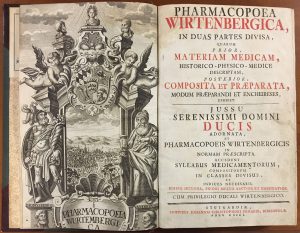Are you ready for a feel-good story?
It involves public-private partnerships in a culturally and linguistically diverse population, culturally competent programming, evidence-based medicine, and patient-centered communication. Oh, and the National Network of Libraries of Medicine’s Middle Atlantic Region (NNLM MAR), headquartered at the University of Pittsburgh, didn’t have to spend a penny.
First, a primer on the NNLM and its Regional Medical Libraries.
With a membership approaching 6,000 libraries, the National Network of Libraries of Medicine is essentially the NLM frontlines, covering the entire US, including Washington, D.C., and all territories. Established by the Medical Library Assistance Act of 1965 (Public Law 89-291), the Network advances the progress of medicine and improves public health by providing US health professionals with equal access to biomedical information and improving individual’s access to information to enable them to make informed decisions about their health.
Eight Health Sciences Libraries function as the Regional Medical Library (RML) for their respective region. The RMLs coordinate the operation of a network of libraries and other organizations to carry out regional and national programs.
And the award we mentioned?
We’ll give you the happy ending upfront.
Two of the Middle Atlantic Region RML’s regional partners, Robert Wood Johnson University Hospital and Saint Peters University Hospital, have received the 2017 Health Research and Educational Trust of New Jersey Community Outreach Award for Enhancing Access and Quality of Care to Reduce Healthcare Disparities for their project titled, “Outside the Box: Partnering with Local Libraries to Increase Community Health Literacy.”
They were honored for this program at the New Jersey Hospital Association 98th Annual Meeting in January.
A Bit of Background
This uplifting story began in 2015, when Karen Parry, long-time NNLM MAR partner and Manager of Information Services at East Brunswick Public Library, connected NNLM MAR with Healthier Middlesex. Healthier Middlesex is a collaboration between Saint Peter’s University Hospital and Robert Wood Johnson University Hospital. One goal of the collaborative was to partner with public libraries to bring culturally and linguistically appropriate resources and evidence-based health information to the communities’ vulnerable populations.
“Healthier Middlesex believes that public libraries are the epicenter for health information in every community,” said Zach Taylor, the coordinator of that program. “By increasing access to appropriate health information from a trusted source, such as a public library, we empower community members to advocate for their own health through informed health decision-making, leading to more fulfilling and healthy lives.”
Although the Middle Atlantic Region hasn’t supported the project financially, Lydia Collins, NNLM MAR Consumer Health Coordinator, has done some consulting with the group and was invited to offer educational sessions for the public libraries in Middlesex County.
Based on the results of this program and this award for recognition, MAR Program Lead Renae Barger anticipates their partnership and involvement continuing to grow with these entities.
The Award Itself
Below is the abstract that the Healthier Middlesex team submitted for the Health Research and Educational Trust of New Jersey award, which offers an excellent summary of the project:
Access to care is a pervasive issue across the United States. In Middlesex County, access is complicated by a culturally and linguistically diverse population. Located in central New Jersey, Middlesex County has approximately 820,000 residents, over 50 percent of whom are minorities. To provide effective health services, programs need to target diversity through cultural competency programming and patient-centered communication strategies. Saint Peter’s University Hospital and Robert Wood Johnson University Hospital targeted access to reliable health information through non-traditional partnerships with local community libraries and the National Network of Libraries of Medicine Middle Atlantic Region (NNLM MAR).
The idea to enlist public libraries was modeled after the “Just for the Health of It” program, a nationally recognized health literacy program of the East Brunswick Public Library (EBPL). This program leverages the research aptitude of librarians and the physical accessibility of the public library to increase access to health information.
About “Just for the Health of It”
The idea for “Just for the Health of It” was born in 2010 when EBPL, a single-branch library located in central New Jersey, noticed that their community was undergoing a seismic demographic transformation into a patchwork of immigrants from Egypt, Russia, China, India, Pakistan, and Korea.
At the same time, the census also indicated that the township residents were growing older. A notable trend soon emerged that many senior citizens and immigrants had a need for health information and they turned to the public library as a welcoming and comfortable place where they were not judged. Many seniors suffered from visual, neurological, or motor impairments that prohibited them from using a computer. Others lacked computer skills necessary to find the most current online medical information. Immigrants turned to the library to help find a doctor who spoke their language or to understand a condition.
In response to these demands, EBPL started a home-grown health initiative called “Just for the Health of It.” Within a year it became apparent that the librarians needed more skills to meet the complex health requests of the community. That is when the magic happened and EBPL turned to NNLM MAR in what has become a strong and enduring partnership.
“NNLM MAR has transformed our librarians into knowledgeable, dynamic crusaders of community health,” said Karen Parry, Manager of Information Services. “Under the guidance of Lydia Collins, NNLM MAR Consumer Health Coordinator, EBPL librarians earned certification in all areas of health and wellness that follow the entire life cycle, from birth through seniors.”
The knowledge gleaned by NNLM MAR training has touched the lives of the most humble and vulnerable residents. A tearful immigrant father from Egypt turned to the library to understand a diagnosis of H. pylori infection of his hospitalized two year old. Another elderly gentleman sent a note that read “My wife and I are on in years. We have no computer at home and we often use your health services. Without the library, we would never know our options.”
“Just for the Health of It” caught the eye of Healthier Middlesex as a simple, low-cost program that could be emulated by other libraries to improve the health of all residents, especially the poor, elderly, and new immigrants. Lydia Collins states, “The National Library of Medicine provides reliable health information resources at no cost. It is rewarding to work with public library staff to educate and empower them to tap into these resources and support health outreach programs.”
Tapping into the RML’s Resources
So how did the NNLM Middle Atlantic Region help power this partnership with information?
The Middle Atlantic Region offers training and consultation on evidence-based National Library of Medicine health information resources. In addition, NNLM MAR offers classes for librarians to obtain the Medical Library Association’s Consumer Health Information Specialization (CHIS). This program teaches librarians how to access NIH resources and provide culturally and linguistically appropriate, and evidence-based health information to their community members. Most libraries in Middlesex County were unaware of the services available to them through NNLM MAR so the hospitals conducted outreach and education seminars to engage 14 libraries with the NNLM MAR. As a result, seven libraries plus the entire Somerset County Library System became NNLM MAR members, gaining access to these resources. By increasing access to reliable health information, tailored to the specific needs of each community member, the program is helping patients advocate for their own health through informed health decision-making, which leads to more fulfilling and healthy lives.
As NNLM MAR Executive Director Kate Flewelling points out, “The National Network of Libraries of Medicine can help facilitate such partnerships in a number of ways. Because we work with all kinds of organizations, we are in a unique position to assist public libraries to find local organizations with which to partner—and vice versa. We offer funding to promote library and community health partnerships. And, we can provide training to all audiences on relevant National Library of Medicine resources.”
Postscript
The partners involved were very excited about this award. It went to the Presidents of Saint Peter’s University Hospital and Robert Wood Johnson University Hospital and thus has potential for recognition of public libraries to receive future RWJF funding as health information literacy hubs!
Renae Barger says this program could easily be replicated within the Mid-Atlantic Region and perhaps nationwide.
“Public libraries are trusted places within the community. It is encouraging to work with organizations like Healthier Middlesex who recognize the value of elevating public libraries to be seen as hubs for health information, empowering consumers to be healthy and make informed decisions regarding their health. Thanks to the support of the National Library of Medicine, every state in the US has a regional medical library with trained staff ready to assist in this process.”
*This article was reprinted from “ Win. Win. Win. Win. Win. A Major Award for One Regional Medical Library’s Partners, and No NLM Funds Spent!,” NLM in Focus, March 21, 2017.
March 28th Update from MAR Executive Director Kate Flewelling:
NNLM MAR continues to build on the partnerships discussed here. In the coming year, we will participate in two separate but interconnected symposia. We were asked by the New Jersey Statewide Network for Cultural Competence to partner with them on their annual conference—the topic will be mental health and health literacy. We also anticipate conducting one or more webinars on NLM resources for them. We have also been asked to participate in a symposium for 20 New Jersey communities funded by the Robert Wood Johnson Foundation’s Communities Moving to Action grants. The symposium will focus on developing partnerships with libraries, and our role will be to provide examples and promote our funding and NLM resources. Finally, the Greater Mercer Health Partnership heard of the work described in the article and invited me to speak to their coalition of over 50 organizations. All of these partnerships allow us to cost-effectively promote NLM resources and NNLM services to community and public health professionals from all sectors.


 Wearable technology. Visual data analysis. Game-based learning.
Wearable technology. Visual data analysis. Game-based learning. Although not a type of literature typically found in health sciences libraries, comics are receiving attention as a promising educational resource for the health professions.
Although not a type of literature typically found in health sciences libraries, comics are receiving attention as a promising educational resource for the health professions. 

